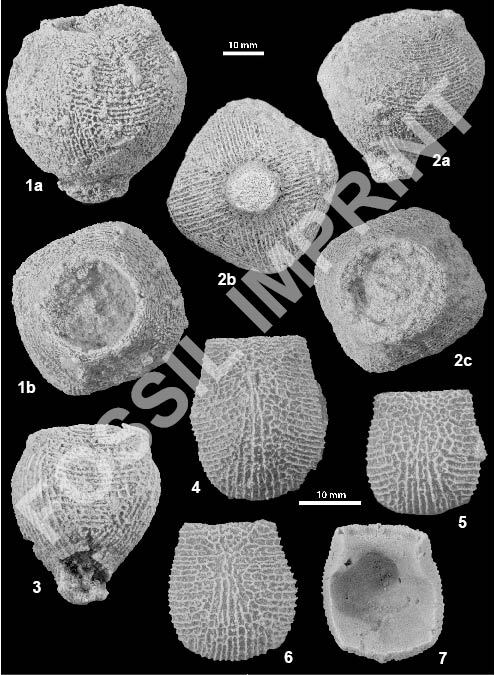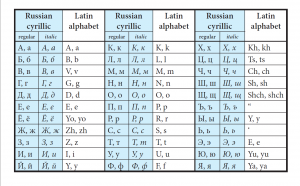Fossil Imprint (formerly Acta Musei Nationalis Pragae, Series B – Historia Naturalis), publishes original scientific articles from a variety of disciplines, and monographs, unpublished elsewhere.
Author guidelines can be downloaded in a pdf file here.
General requirements
Articles are accepted only in English; only in rare circumstances will the editors make an exception. Manuscripts must be in DOC or RTF format, sent via email to the Editorial Office (fossil.imprint@nm.cz).
Text must be left-justified, one-and-half-spaced, single standard font (like Times New Roman, Courier New, etc.), 12 point, without breaking hyphens and no images in the text. Name(s) of author(s) of scientific name(s) in small capitals, with comma inserts between the name and year. Italics are only for scientific genus-group and species-group names.
Submission structure
Title page must contain (1) the article’s title, (2) full name and address of author(s), (3) bibliographic identification formatted as follows: Novák, J. et Jones, K. L. (1995): Article title (see 1). – Fossil Imprint, 50(1-2): 12–95, Praha. ISSN 2533-4050 (print), ISSN 2533-4069 (on-line)., (4) English abstract (max. 200 words), (5) keywords (English, max. 10 words). Following the article text (6) come acknowledgements (7), cited literature (8), tables with explanations (9), explanations of images embedded in text (10) and explanations of plates (11).
Citations
For inline citations, use standard font, without dashes between author and year. If there are two authors, they are separated by “and”; if there are more than two authors, “et al.” is used, again in standard font [e.g. (Heissig and Fejfar 2013) or (Rabeder et al. 2010)]. If multiple citations occur in a row, they are arranged chronologically from oldest to newest, separated by commas (e.g. Rode 1935, Musil 1959, 1965a, b, 1991, Rabeder 1989). All publications cited in the text must be included in the list of cited literature, ordered alphabetically by author and year of publication (see examples). Cited publications in Czech or other non-congressional languages will be cited in the original, with an English translation in square brackets and original language name in parentheses [e.g. (in Czech) or (in Slovak with German summary) etc., see example (B) below]. When transcribing Cyrillic, the author must use this transliteration table.
Journal titles are given in unshortened form. If Internet sources (other than electronic journals) are cited, cite them in the text and not in References.
Example of citation ordering
Arthur, A. (2015a)
Arthur, A. (2015b)
Arthur, A. (2016)
Arthur, A., Conan, C. (2011)
Arthur, A., Conan, C., Doyle, D. (2010)
Arthur, A., Doyle, D. (2008)
Example citations
Journals
(A) Drinnan, A. N., Crane, P. R., Friis, E. M., Pedersen, K. R. (1990): Lauraceous flowers from the Mid-Cretaceous of eastern North America. – Botanical Gazette, 151(2): 370–384.
(B) Shpinyov, E. S. (2014): Novye dannye ob evripteridakh (Eurypterida, Chelicerata) verkhnego karbona Donetskogo ugol’nogo basseyna [New data on eurypterids (Eurypterida, Chelicerata) of the Upper Carboniferous of the Donets Basin]. – Paleontologitcheskiy Zhurnal, 2014(3): 67–72. (in Russian)
Proceedings and monographic series
(C) Mutvei, H., Dunca, E. (2007): Connecting Ring Ultrastructure in the Jurassic Ammonoid Quenstedtoceras with Discussion on Mode of Life of Ammonoids. – In: Landman, N. H., Daivs, R. A., Mapes, R. H. (eds), Cephalopods Present and Past: New Insights and Fresh Perspectives. Springer, Dordrecht, pp. 239–256.
(D) Pohar, V. (2011): History of Research in the Ajdovska jama near Krško (Slovenia). – In: Pacher, M., Pohar, V., Rabeder, G. (eds), Ajdovska jama. Palaeontology, Zoology and Archaeology of Ajdovska jama near Krško in Slovenia. Mitteilungen der Kommission für Quartärforschung der Österreichischen Akademie der Wissenschaften, 20: 5–10.
(E) Gale, A. (2011): The Phylogeny of Post-Palaeozoic Asteroidea (Echinodermata, Neoasteroidea). – Special Papers in Palaeontology, 85: 1–112.
If the title of the proceedings is not clearly determinative, the publishing authority is cited as well:
(F) Barlow, A. E. (1899): Report on the area included by the Nipissing and Temiscaming map-sheets. – Annual Report, N.S., Geological Survey of Canada, 10(1897): 5–301 (report I).
(G) White, J. M. (2014): The palynostratigraphy, age, and environment of strata penetrated by the Mallik 5L-38 gas-hydrate research well, Northwest Territories, determined by differentiating the recycled and contemporaneous palynomorphs. – Bulletin, Geological Survey of Canada, 604: 1–85.
Abstracts
(H) Santi, G. (2014): Cave Bears in Italy: Updates and New Perspectives. – In: Rabeder, G., Kavcik, N. (eds), Abstracts and Excursion-guide, 20th International Cave Bear Symposium, September 10th – 13th 2014, Corvara, Italy, p. 5.
Books
(I) Velenovský, J. (1885): Die Gymnospermen der böhmischen Kreideformation. – Ed. Grégr, Prag, 34 pp.
Manuscripts
(in parentheses after the citation is the name of the library in which the manuscript is stored)
(J) Macák, F. (1966): Křídový útvar v sz. Čechách (svrchní turon až santon) [Cretaceous formation in NW Bohemia (Late Turonian to Santonian)]; Kandidátská práce [CSc. thesis]. – MS, Česká geologická služba, Prague, the Czech Republic, 82 pp. (in Czech) (copy in library of Czech Geological Survey)
References to figures
Images that are embedded in the text are marked: “Text-fig. 1a”, and photographs embedded in the text are marked: “Pl.1, Figs 1b–3a”. When referring to an illustration in another article, abbreviations are in lower case in front (e.g.: Ettingshausen 1866: pl. 13, fig. 13). Approximate position of embedded images is indicated in the text using upper case in square brackets (e.g.: [TEXT-FIG. 1]).
Illustrations
Images and diagrams must match the column width (84 mm) or printed page size (174 × 238 mm). Size and type of symbols are chosen by the author so that they are legible, and will remain so even after anticipated size reduction (ideal is the image prepared in full size and primary font in 16 points). The author must be careful to maintain a single font for each level of captions and unified graphic symbols (see templates and examples here).
The font for illustrations should be without serifs (Arial is best), regular or bold. Parts of images embedded in the text (Text-fig.) should be identified with lower case Latin letters; in plates, Arabian numerals. For marking details or different views of the same object, lower case Latin letters are used (1a, 1b…). An example is here:
Vector graphics and manual illustrations
Such images are accepted only in electronic form in PNG or TIFF format. Resolution of these images must be at least 600 dpi, and width is 84 mm for column or 174 mm for page. Besides exports in the above-mentioned formats, we also request that authors provide originals in CDR or AI, if they are available. Graphs are accepted in XLS format (including source data), or as TIFF, EPS or PNG images; tables as separate files in DOC or XLS (e.g. “tab1.doc”, “tab2.xls”…).
Photographs or plates
Photographs in electronic form are preferred. They should meet the following criteria: black-and-white (i.e. grayscale) or color (CMYK), minimum resolution 300 dpi, in the final print size or slightly larger, with proper tonal balance (without excessive highlighted areas). Dimensions of all photographs must be specified by the author. When assembling plates, the author should avoid creating large blank areas, and sort the photographs from left to right, and from top to bottom. Actual size of object is indicated by the use of a scale-bar in the plate. It is also possible to cite the magnification in the comments (e.g. “25×”). An example of an ideally laid out plate is the following:

Manuscripts fulfilling all above specified conditions will be submitted to at least two independent reviewers, and the editor will make the final publication decision. All accepted texts will be subject to a language review. The author will receive 20 copies of his printed article, and may request an electronic version (PDF) as well.
Submit your manuscripts to the Editorial Office: fossil.imprint@nm.cz.


